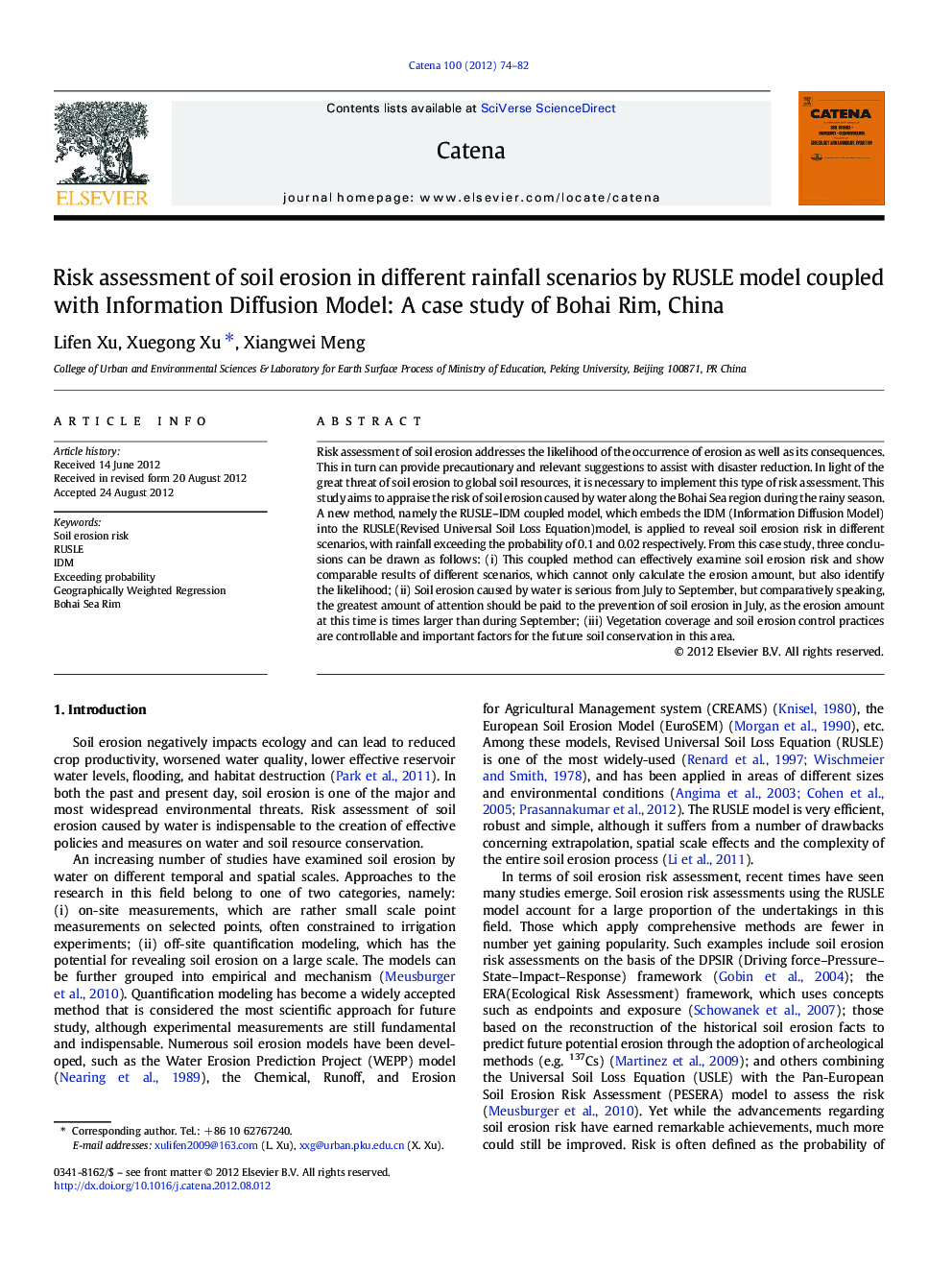| Article ID | Journal | Published Year | Pages | File Type |
|---|---|---|---|---|
| 4571724 | CATENA | 2013 | 9 Pages |
Risk assessment of soil erosion addresses the likelihood of the occurrence of erosion as well as its consequences. This in turn can provide precautionary and relevant suggestions to assist with disaster reduction. In light of the great threat of soil erosion to global soil resources, it is necessary to implement this type of risk assessment. This study aims to appraise the risk of soil erosion caused by water along the Bohai Sea region during the rainy season. A new method, namely the RUSLE–IDM coupled model, which embeds the IDM (Information Diffusion Model) into the RUSLE(Revised Universal Soil Loss Equation)model, is applied to reveal soil erosion risk in different scenarios, with rainfall exceeding the probability of 0.1 and 0.02 respectively. From this case study, three conclusions can be drawn as follows: (i) This coupled method can effectively examine soil erosion risk and show comparable results of different scenarios, which cannot only calculate the erosion amount, but also identify the likelihood; (ii) Soil erosion caused by water is serious from July to September, but comparatively speaking, the greatest amount of attention should be paid to the prevention of soil erosion in July, as the erosion amount at this time is times larger than during September; (iii) Vegetation coverage and soil erosion control practices are controllable and important factors for the future soil conservation in this area.
► We assess soil erosion risk using a newly coupled method, namely RUSLE–IDM. ► We examine differences of soil erosion risk among July, August and September at two rainfall scenarios respectively. ► The RUSLE–IDM method is effective, facilitating rainfall uncertainty in soil erosion risk. ► The greatest amount of attention should be paid to the prevention of soil erosion in July.
